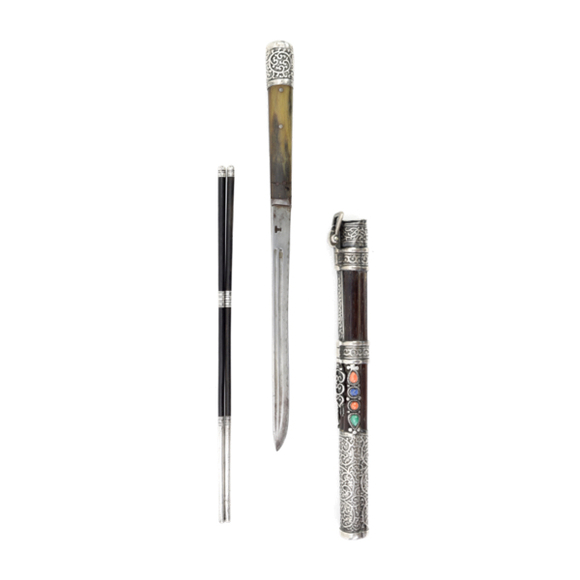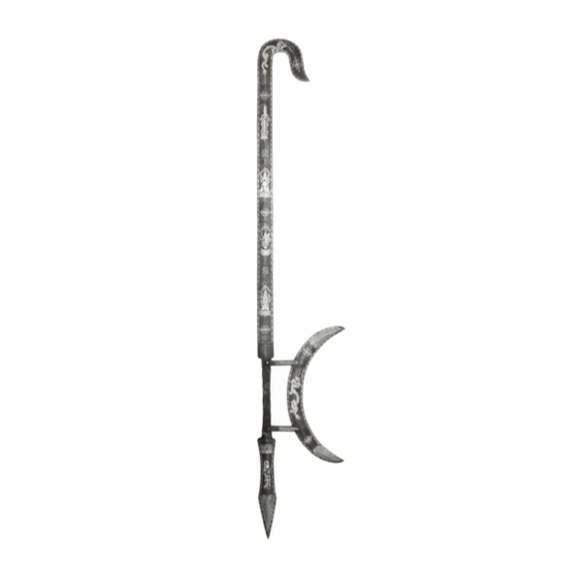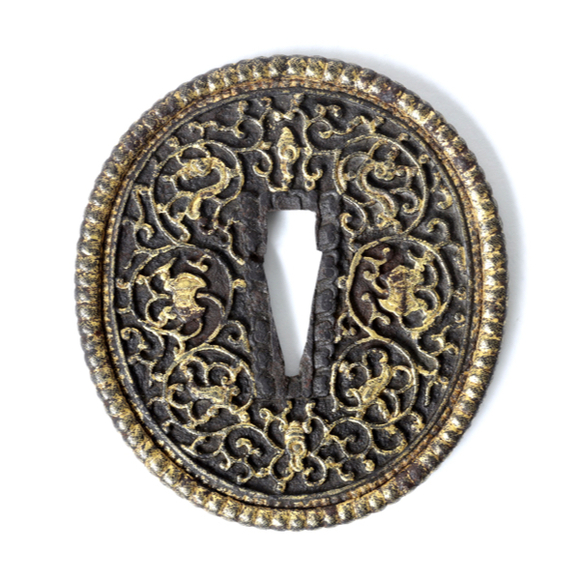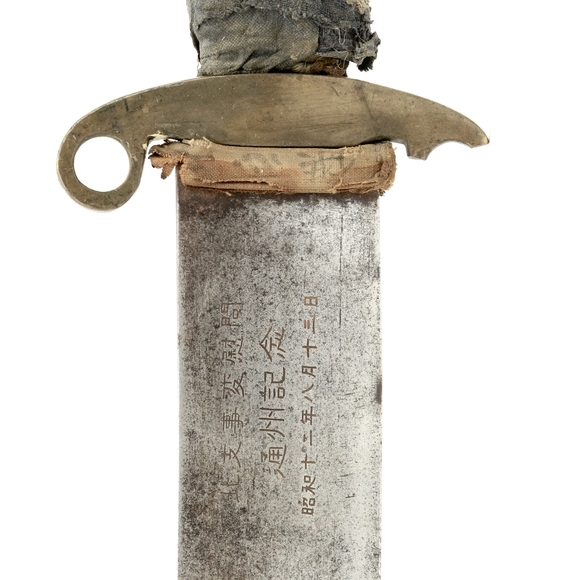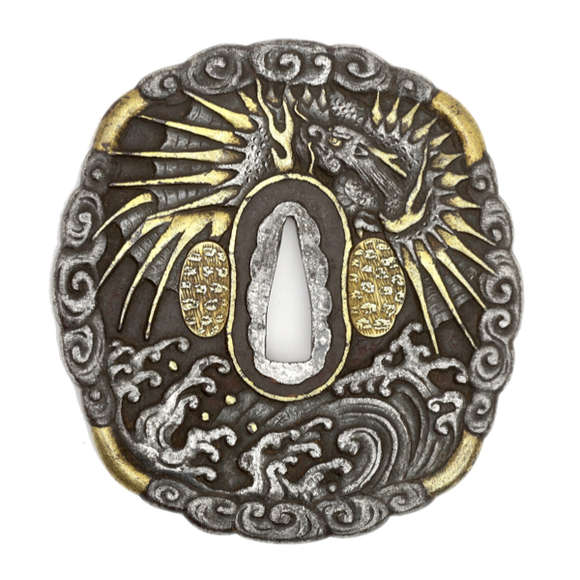Language: Mandarin Chinese
Source: Classical literature
Description
Tiěbiān (鐵鞭) or "iron whip" is used to describe both flexible sectioned whips and heavy bar-maces. The flexible whips were primarily in use by martial artists. As a civilian weapon, information about them is scarce but enough of them survived to indicate they were once quite popular. Today, very light versions of these whips are used for martial arts demonstrations but some antiques could be well over a kilo.
Such flexible whips are usually named after their number of sections, often uneven numbers so that there is one section in the exact center. In modern practice, the most common is the jiǔjiébiān (九節鞭) or "nine sectioned whip". Among antiques, many varieties are encountered from as few as three sections to as many as thirteen.

A Chinese qījiébiān (七節鞭) or "seven-sectioned-whip" of the 19th century.
From a private collection.
Sectioned bar-maces
In the case of bar-maces, tiěbiān exclusively refers to those with segments. Those with smooth rods are called jiǎn (锏). The sectioned bar-maces go back until at least the Song dynasty where they first appear in the 11th century Wǔjīng Zǒngyāo. During the Ming and Qing dynasties, they were primarily used by guards and other elite forces.
Such maces were usually quite heavy and could easily destroy a sword or do substantial damage through armor, but their downside was, of course, they were much slower and required a high level of strength and endurance from its wielder. During the Qing, a version of the tiěbiān bar-mace was one of the iconic weapons of the Qing's elite forces, the jiànruìyíng.

A chinese tiěbiān of a type also used by Qing special forces. It weighs 2.2 kilos.
Previously in my private collection.
In the literature

A tiěbiān (left) in the Wǔjīng Zǒngyāo compiled between 1040 -1044.
 A tiěbiān in the Ming dynasty Wǔbèi Zhì of 1621.
A tiěbiān in the Ming dynasty Wǔbèi Zhì of 1621.
(Clearly the woodblock is a copy of the Song version.)

A two-handed tiěbiān in the Wǔbèi Yàolǜe of 1638.

A tiěbiān in the Qing dynasty Huángcháo Lǐqì Túshì of 1766.
My translation of the text:
"According to the design set in the 14th year of the Qianlong reign:
Made of forged iron. The stave is shaped like bamboo sections, 2 chi 3 cun 5 fen long. It’s guard is an iron disc, 1.5 fen thick. Handle is 6 cun long, with a circumference of 3 cun. Made of wood, lacquered black, and with an iron pommel or wrapped with green silk cord. Fittings are damascened in gold."
(The year is 1749 or 1750 depending on the exact date. This biān is about 103 cm long, using my own conversion of the Qing armorer's chi of around 35 cm.)
Etymology
It may come across as strange that the term "whip" is used for a very stiff mace. It refers to niúbiān 牛鞭, bull pizzles, which were used as whips for flogging but were essentially rigid as well.
 A dried pull penis to which the tiěbiān lends its name.
A dried pull penis to which the tiěbiān lends its name.
Sources
Wǔjīng Zǒngyāo (武經總要) or "Complete Essentials for the Military Classics", compiled during the Northern Song dynasty by Zeng Gongliang between 1040-1044.
Wǔbèi Zhì (武備志) or "Treatise of Military Preparedness" compiled by Mao Yuanyi, 1621.
Wǔbèi Yàolǜe (武備要略) or "Important Military Outlines" by Cheng Ziyi, 1638.
Huángcháo Lǐqì Túshì (皇朝禮器圖式) or "Illustrated Regulations on the Ceremonial Paraphernalia of the Dynasty", edited by Yun Lu. 1766 woodblock edition based o a 1759 manuscript.

